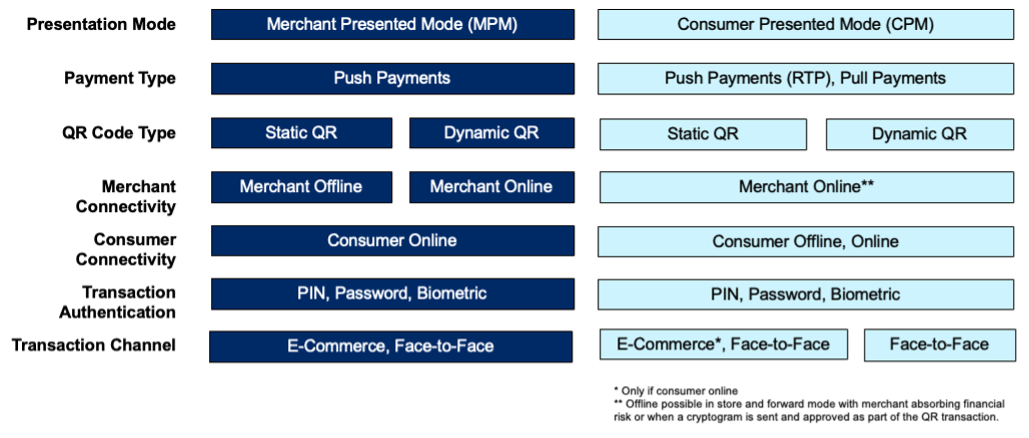Years ago, in the United States we began to see barcodes on products that could easily be scanned by a clerk at check-out in the grocery store. The barcode facilitated the electronic transfer of data that identified the product, its SKU, and related cost to charge the customer. The barcode can only hold so much information limited by its horizontal shape. In the ‘90s the QR code was invented which is a two-dimensional or matrix barcode that houses data that can be read horizontally and vertically enabling the code to hold a significantly greater amount of data.
With the advent of the QR Code, not only can retailers leverage scanners at checkout to support a similar experience to the barcode, but other use cases can be supported in which a customer scans a QR Code from their own user device. Everyone with a smartphone essentially has a QR Code scanner at their fingertips. This enables several alternative use cases for both consumers and retailers.
Some experiences include scanning a QR Code to link to a URL for a menu, access a wi-fi network, a mobile app download, link to a survey, view retail location details, and check-in or access to entry of an event. Of course, an electronic payment experience such as paying for parking, transit, or fuel; self-checkout; and pay at the table are all financial use cases that QR Codes can enable as well. The challenge is understanding all the different use cases possible and those that fit best in delivering a specific retail experience.
As QR Codes continue to proliferate, MAG developed a Community of Practice (COP) with the objective of developing a reference guide that would help members educate themselves on the elements of a QR Code, use cases that can be supported, major QR Code players, and implementation considerations. Although the guide is focused primarily on payment use cases, there are considerations for other non-financial use cases as well which shows how robust the QR Code capabilities are.
QR Code elements include various presentation modes (merchant or consumer presented), payment types (push/pull), code types (static/dynamic), authentication methods (PIN, password, biometrics), channels (eCommerce/face-to-face), and connectivity options (online/offline) that are interdependent. How these elements interconnect and are implemented will impact the payment types accepted, rates of acceptance, access across channels, and the overall experience.

Educate yourself or your team with a foundational understanding of QR Codes by taking a peek at the MAG Merchant Reference Guide on QR Code Implementations located on the MAG Learning Center (merchant access only).
Next time you see a QR Code, take a closer look. Do you notice a pattern that remains the same in every QR Code? If you answered the use of three squares within the square, you answered correctly! Mike Jackson of ACI Worldwide was the first person to answer this question correctly and won a $50 gift card. Congratulations, Mike!

/new-website-headshots/laura-194x221-newde938f39-ed18-4a87-a939-58943c00f407.png?sfvrsn=cfeaa4ba_14)